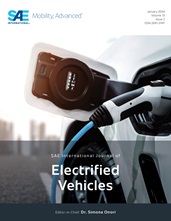Electric vehicles (EVs) suffer from long charging time and inconvenient charging
due to limited charging stations, which are the main causes of drivers’ range
anxiety. Real-time and accurate driving range prediction can help drivers plan
journeys, alleviate range anxiety, and promote EV development. However,
predicting the EV driving range is challenging due to different weather, road
conditions, driver habits, and limited available data. To address this issue,
this article proposes a novel digital twin-based driving range prediction
method. First, a one-year real-world EV dataset in Beijing is utilized. Detailed
feature selection is conducted for the dataset, and six key features are
extracted: battery SOC, consumed battery SOC, battery total voltage, battery
maximum cell voltage, battery minimum cell voltage, and mileage already driven.
Then, a random forest method is used to train the EV driving range prediction
model using the features described earlier. Four prediction models with
different adopted features are trained, respectively. Finally, the sliding
window algorithm is proposed for the input of random forest to investigate its
impact on prediction accuracy in the four prediction models, and different
window sizes are evaluated. Results show that the sliding window algorithm can
significantly improve the prediction model with only SOC as input, while it can
deteriorate other models with more features. The most accurate model taking all
six features as inputs provides 89.8% data that has an accuracy of over 80%,
while data proportion of the prediction model without past energy consumption is
only 31.8%.
